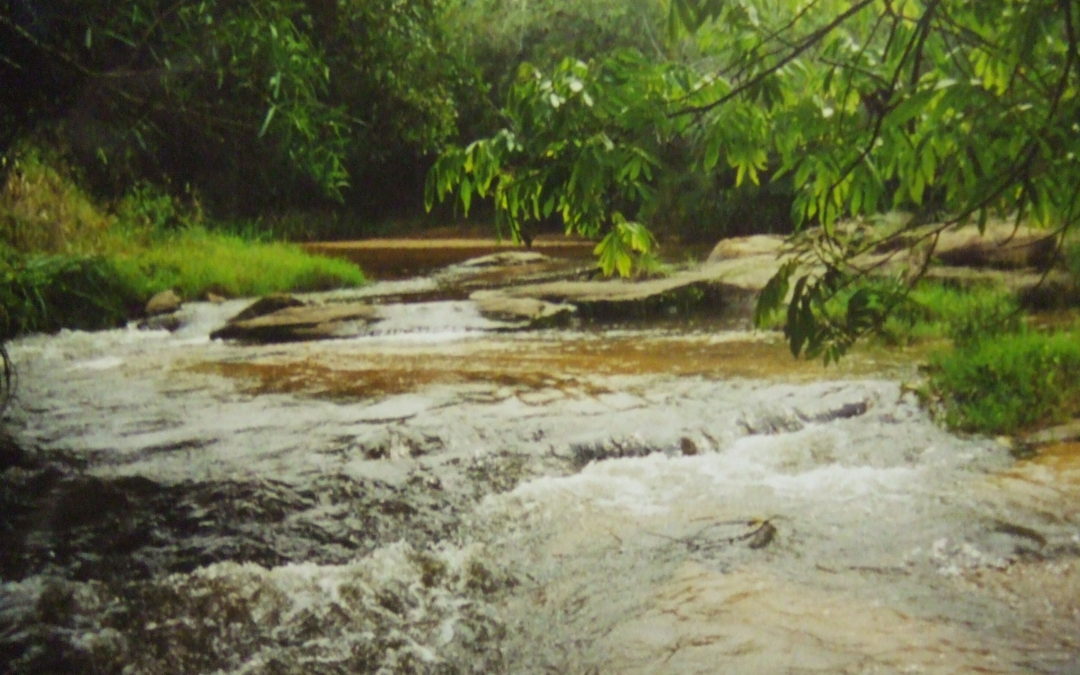Paraguay is a land of great rivers. Wherever there are large rivers there must be smaller rivers that feed into them. These in turn receive the waters of numerous streams that drain the land.
The result of this is that Paraguay has a multitude of small fresh water streams. Across the lowlands they slowly meander growing in size as the go. These are often too small to navigate and suitable only for bathing or watering animals. They are though due to their nature often sediment and weed filled.
For clearer more refreshing waters it is necessary to head up into the hills. Here the crystal clear waters cascade down rocky hillsides and flow briskly along sandy channels. Often the steams are forced over hills sides or across bedrock to solid to wear down. Most streams contain waterfalls or at the very least shallow rocky rapids.
These natural features are enjoyed and treasured by the Paraguayans. As such they have on the whole been left natural. Either the tree cover remains right down and over hanging the river bank or if the stream runs through a park there will be soft grass and shady trees all around.
The area around Piribebuy is well known for its many fresh water streams. Located in the hills the water is clean and clear. It is also not far from Asuncion and as such popular with tourists. There are many country homes used just a few times a year by their owners and country parks ready to receive weekend visitors.
Two of the more developed ones nearby are Chololo which has small waterfalls and a restaurant which is open all year round and Pinamar which sits on a shallow, rocky fast bend in a river and is set up for overnight or weekend stays. Beyond the big parks there are many other smaller ones either just off the tarmac or at a distance down one of the dirt tracks.
These are almost always family run. A portion of land set aside to benefit from the visiting tourists every summer time. The heat of high summer sends are able out of the cities at some point during the summer seeking fresher country air.
On a hot summer day with temperatures climbing in excess of 40 degrees any sort of refreshment is welcome. The hill country steams always flow with cool water even on the hottest of days and with many over hanging trees shade is abundant.
There can be few better places to be on a hot summer afternoon than a cool sandy stream. The streams are apart from where rocks form rapids of natural benches sandy. The sand is the soil washed of the land in storms and the water is clear and the stream beds weed free.
One reason they stay this way are the heavy storms. During and after a storm a stream will swell in size as water floods in torrents off the land. The stream bed is torn up and the waters turn brown with sediment. Once the excess water has flown away a fresh layer of sand is left behind and any plants that had been trying to grow would have either been buried or up rooted.
The refreshing properties of the clear water are appreciated by all. Children become water babies during the long summer holidays and groups of adults settle themselves in under shady trees with packs of beer.
All this activity is on the whole confined to the hottest months of the year. From November to March. Outside that apart from Easter the waters are generally returned to nature. The country parks become dormant and local children no longer have to compete with tourists for the best stretches of water.
All this water does have one downside. That though is only really a problem at dawn and dusk. That is the mosquitoes that find the calmer sections and damp edges the perfect breeding grounds. Fortunately out in the countryside unlike in the towns they rarely carry any infections. This I am sure is down to the countryside having a cleaner environment.
However the constant buzz of mosquitoes and other insects even if not dangerous is frustrating. As such it is no bad thing that I have no waters of my own. It may mean that I have to visit someone elses stretch of stream to bathe but it also means that the house is almost mosquito free.


Very nice. Will have to visit one of these 2 resorts on our next vacation. I hope they are still not closed for the COVID lockdown.
They always lie dormant until summer approaches, so very quite at the moment.
Do come and visit once they get up and running again.
Those are just the two largest. There are plenty of smaller, quieter family run one around here as well
Oh right, forgot it was still winter, LOL.